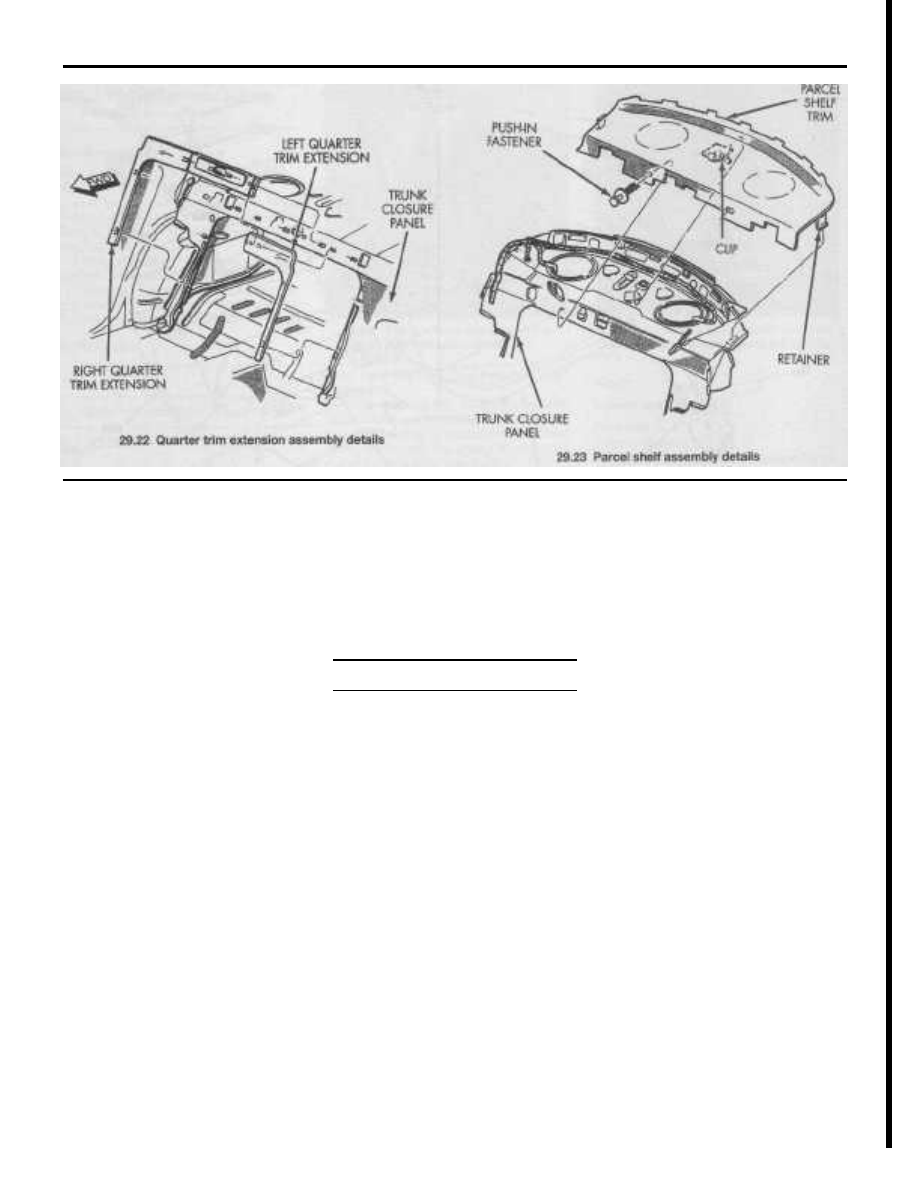Chrysler Cirrus, Dodge Stratus, Plymouth Breeze Haynes. Manual - part 34

11-22
Chapter 11
Body
29.22 Quarter trim extension assembly details
LEFT QUARTER
TRIM EXTENSION
RIGHT QUARTER
TRIM EXTENSION
29.23 Parcel shelf assembly details
22
Using a screwdriver, pry off the left and
right quarter panel extensions (see illustra-
tion).
23
Remove the push-in fasteners securing
the parcel shelf to the trunk closure panel
(see illustration).
24
Pull the parcel shelf forward to disen-
gage the clip securing parcel shelf to the
trunk closure panel and remove it from the
vehicle.
25
Remove the two bolts securing the seat
back latch/lock to the trunk closure panel and
remove it from the vehicle.
Installation
26 Installation is the reverse of removal.
Rear seat back latch handle
Removal
27 Inside the trunk, remove the push-in fas-
tener securing the latch handle to the bottom
of the parcel shelf.
28
Detach the handle from the folding rear
seat latch (see illustration 29.5).
Installation
29 Installation is the reverse of removal.
30 Seat belt check
1
Check the seat belts, buckles, latch
plates and guide loops for obvious damage
and signs of wear.
2
See if the seat belt reminder light comes
on when the ignition key is turned to the RUN
or START positions. A warning chime should
also sound.
3
The seat belts are designed to lock up
during a sudden stop or impact, yet allow
free movement during normal driving. Make
sure the retractors return the belt against
your chest while driving and rewind the belt
fully when the buckle is unlatched.
4
If any of the above checks reveal prob-
lems with the seat belt system, replace parts
as necessary.